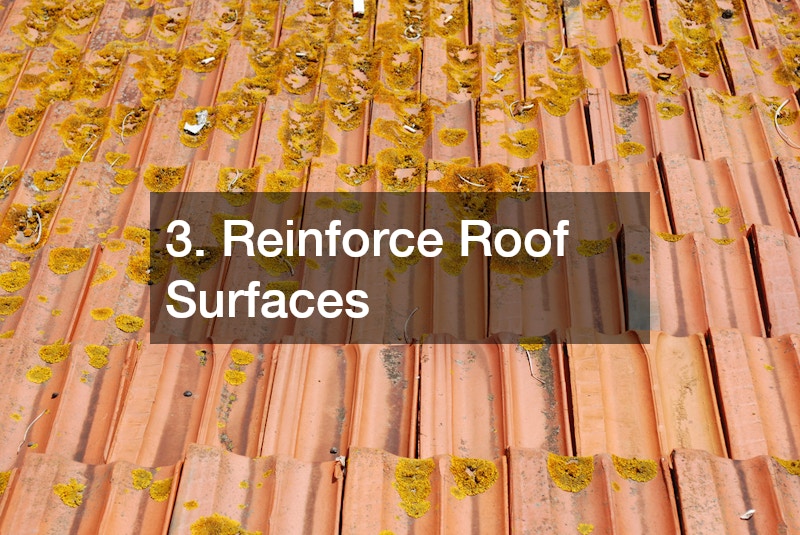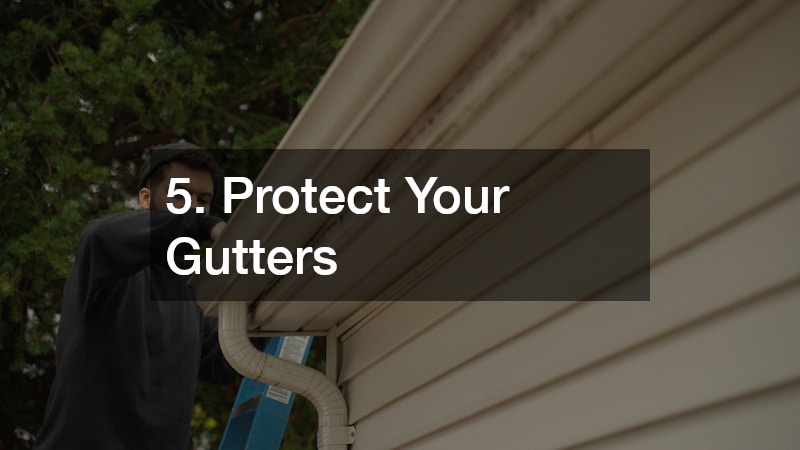Severe storms can strike with little warning, and roofs often take the brunt of the damage. High winds, heavy rain, and falling debris can compromise roofing materials and underlying structures, leading to costly repairs. Preparing your home ahead of storm season is essential for minimizing damage and protecting your investment. Many homeowners focus solely on aesthetic improvements or interior upgrades, neglecting the preventative measures that can make the biggest difference when severe weather hits.
Storm preparedness is more than just securing outdoor furniture or trimming tree branches. It involves a comprehensive approach that addresses the roof, windows, siding, and drainage systems. By inspecting your home, reinforcing vulnerable areas, and working with qualified professionals, you can reduce the risk of structural damage, water infiltration, and costly insurance claims. Implementing these tips can also give you peace of mind, knowing your property is better equipped to withstand storms. Whether you’re in a high-risk area or just want to protect your investment, following proactive steps can save time, money, and stress.
1. Inspect and Upgrade Windows and Doors

Older windows and doors can be vulnerable during storms, allowing wind and water to penetrate your home. Upgrading to hurricane windows and doors can dramatically improve protection against high winds and flying debris. These products are specifically designed to withstand extreme conditions and reduce the risk of damage inside your home. Professional installation ensures proper sealing and structural integrity.
When evaluating existing windows and doors, look for cracks, gaps, or worn weather stripping that may compromise performance. Upgrading to hurricane windows and doors can also increase energy efficiency, but the primary benefit is safety during storms. Many homeowners schedule inspections before the storm season to identify weaknesses and replace or reinforce vulnerable openings. Properly installed hurricane windows and doors prevent water infiltration, reduce pressure on the roof during high winds, and minimize the chance of secondary damage to interior walls and ceilings.
Additionally, modern hurricane windows and doors often come with impact-resistant glass, which provides an extra layer of protection against debris. They can be paired with storm shutters or reinforced frames for maximum safety. Homeowners who prioritize these upgrades not only protect their property but also enhance peace of mind, knowing that their home is structurally prepared for severe weather.
2. Secure the Garage
Garage doors are often the largest and most vulnerable openings on a home, making them critical to storm preparedness. An unsecured or weak door can allow high winds to enter, causing structural pressure that can damage the roof. Installing a reinforced overhead garage door designed for storm resistance can prevent catastrophic failure during severe weather events.
Older garage doors may bend, warp, or break under wind pressure. Reinforcing them or installing a certified overhead garage door provides a barrier that protects both vehicles and the interior of your home. Maintenance is equally important; ensure rollers, tracks, and hinges are in good condition, as worn components can compromise stability. Many homeowners schedule inspections with professionals to confirm that their overhead garage door meets safety standards before storm season.
In addition to wind resistance, a properly secured overhead garage door reduces the chance of water intrusion. When doors fail, rain can enter and damage flooring, stored belongings, and even the ceiling below. By investing in storm-rated doors and performing routine maintenance, homeowners can strengthen one of the most critical areas of the home and reduce potential damage to the roof and supporting structures.
3. Reinforce Roof Surfaces

Your roof is the first line of defense against storm damage. Older shingles or weakened areas are particularly vulnerable during high winds. Professionals often recommend regular inspections and, when necessary, roof replacement to ensure your home is protected. New materials are engineered to withstand heavy rain, wind, and debris impact.
During roof replacement, contractors assess the entire roofing system, including shingles, flashing, and underlayment, and replace damaged sections. Proper installation ensures that roofing materials remain secure during storms. Scheduling a roof replacement before hurricane season or severe weather events can prevent minor damage from escalating into costly repairs. Professionals performing roof replacement often also check ventilation and attic conditions to ensure that the roof performs efficiently under pressure.
Investing in a quality roof replacement not only improves storm resistance but also enhances energy efficiency and curb appeal. Homeowners benefit from peace of mind knowing that their home’s largest surface is structurally sound, water-tight, and capable of protecting interior spaces from damage caused by high winds or debris impact.
4. Inspect Roof Decking
The structural integrity of your roof depends on the condition of the roof decking, which supports shingles and other roofing materials. Over time, moisture intrusion, rot, or insect damage can weaken the decking, making it susceptible to storm damage. Regular inspection by qualified professionals is essential to identify hidden vulnerabilities.
During inspections, contractors assess the roof decking for signs of deterioration, including soft spots, water stains, and warped boards. When weaknesses are found, they replace or reinforce the affected sections to ensure the roof can withstand high winds and heavy rain. Proper maintenance of roof decking also prevents secondary damage to interior ceilings and walls during severe weather events.
Homeowners who invest in the condition of their roof decking protect both the aesthetics and the structural safety of their property. Inspecting and reinforcing the decking before storm season ensures that shingles, tiles, or other roofing materials remain secure. Addressing potential issues proactively reduces the likelihood of extensive repairs and increases the overall durability of the home’s roofing system.
5. Protect Your Gutters

Clogged or damaged gutters can worsen storm damage by allowing water to accumulate and overflow near your home’s foundation. Routine maintenance and strategic upgrades help maintain proper water flow. Many homeowners rely on gutter guard companies to install protective covers that keep debris out while ensuring smooth drainage during storms.
Professional gutter guard companies evaluate the condition of existing gutters and recommend systems that prevent leaves, twigs, and other materials from obstructing flow. By investing in these services, homeowners reduce the risk of water backing up onto the roof, which can weaken shingles and underlayment. Many gutter guard companies also inspect connections, downspouts, and pitch angles to ensure water is directed safely away from the home.
Preventative measures provided by gutter guard companies can reduce maintenance costs over time and improve the efficiency of stormwater management. Homeowners who prioritize professional installation minimize the likelihood of roof leaks, ice dams, and water damage to exterior walls or landscaping. Proper gutter protection complements other storm preparedness measures, ensuring that your roof and home remain safe during extreme weather events.
6. Evaluate Impact-Resistant Windows
Storms can send debris flying at high speeds, posing a risk to glass surfaces throughout the home. Installing impact windows helps reduce this risk by providing reinforced protection against strong winds and flying objects. These windows are designed to withstand strikes without shattering, which safeguards interiors and reduces the risk of roof damage caused by wind entering the home.
Professionals specializing in impact windows inspect framing, seals, and installation techniques to ensure maximum protection. Homeowners often schedule evaluations before hurricane season to upgrade existing windows or replace aging glass. Installing impact windows not only improves safety but can also enhance energy efficiency, noise reduction, and overall home value.
By integrating impact windows into a storm preparedness plan, homeowners create an additional layer of protection for roofing systems. When wind pressure is minimized and interior surfaces are secure, the roof experiences less strain, and the likelihood of structural damage is reduced. Regular inspection and maintenance of impact windows ensure long-term reliability and durability against repeated storms.
7. Strengthen Siding
Exterior siding plays a critical role in protecting walls and roof edges from wind and rain. Over time, materials can deteriorate, crack, or loosen, exposing underlying structures to storm damage. Hiring qualified siding contractors ensures that your home’s siding is secure, properly sealed, and resistant to high winds.
Experienced siding contractors inspect siding panels, fasteners, and flashing to identify weak points before storm season. Repairs or replacements recommended by siding contractors help prevent water infiltration, which can compromise the roof and supporting structures. Many siding systems today are engineered to resist impact, moisture, and ultraviolet damage, making them more effective at protecting homes during severe weather.
Homeowners who prioritize work from professional siding contractors can reduce the risk of interior water damage and roof edge deterioration. By maintaining a strong exterior envelope, the roof, walls, and foundation are better protected, extending the life of the home and improving safety during storms.
8. Manage Tree Hazards

Falling limbs and uprooted trees are major causes of storm-related roof damage. Engaging certified tree services ensures that nearby trees are properly trimmed, stabilized, or removed when necessary. This proactive management reduces the risk of branches damaging shingles, gutters, and skylights during high winds.
Professional tree services evaluate tree health, root stability, and proximity to the home. They recommend trimming, cabling, or full removal when branches or weakened trees pose a threat. Regular maintenance by tree services minimizes hazards and prevents debris accumulation that can obstruct gutters or create additional water damage during storms.
By addressing potential tree risks with professional tree services, homeowners protect both the roof and surrounding structures. This preventive approach reduces insurance claims, avoids costly repairs, and increases peace of mind knowing that one of the most common sources of storm damage has been addressed ahead of time.
9. Perform Thermal Moisture Inspections
Moisture intrusion can go unnoticed for months, weakening roofing materials and structural components. A thermal moisture roof scan uses advanced imaging to detect hidden water accumulation before visible damage occurs. Identifying these areas early helps prevent mold growth, wood rot, and compromised roof integrity.
Specialists performing thermal moisture roof scans can pinpoint leaks in shingles, flashing, or roof penetrations. Homeowners often schedule these scans prior to storm season to ensure the roofing system is dry and structurally sound. By addressing moisture detected during a thermal moisture roof scan, repairs can be made before severe weather exacerbates the problem.
A thorough thermal moisture roof scan provides peace of mind, confirming that your roof is resilient against water infiltration. Catching hidden moisture early allows for targeted repairs, reducing the risk of interior damage, prolonged roof deterioration, and costly emergency fixes. This technology is an essential tool for homeowners committed to comprehensive storm preparedness.
10. Inspect Roof Fasteners and Flashing
Secure fasteners and properly installed flashing are essential to preventing roof uplift during storms. Over time, nails, screws, and flashing can loosen or corrode, increasing the risk of shingles being blown off. Many homeowners rely on local roofers to conduct inspections and reinforce these critical components.
Experienced local roofers examine fasteners, flashing, and joints to ensure they meet manufacturer and industry standards. When weaknesses are identified, repairs or replacements are made to secure roofing materials and prevent leaks. Scheduling inspections with trusted local roofers before severe weather helps ensure that your roof maintains its structural integrity.
By working with local roofers, homeowners reduce the likelihood of wind damage, water infiltration, and costly post-storm repairs. Reinforcing fasteners and flashing protects both the roof surface and underlying decking, extending the life of the roofing system and supporting the overall storm readiness of the home.
11. Planning for Emergency Services
Even with thorough storm preparation, extreme weather can still cause unexpected damage to a home’s roof or other critical systems. Planning ahead for roof replacement and other emergency services ensures homeowners can respond quickly and effectively if damage occurs. Having a trusted network of contractors ready to assess and repair your roof can prevent minor problems from escalating into major repairs.
Professional roof replacement teams can safely remove damaged materials and install new roofing systems, restoring protection and structural integrity. Scheduling inspections and lining up service providers before storm season allows homeowners to act immediately, reducing exposure to leaks, water damage, and interior deterioration. When paired with preventive measures like proper maintenance of roof decking, reinforced fasteners, and impact-resistant windows, having emergency services on standby significantly improves resilience against severe weather.
Planning for emergency services also involves clear communication with contractors, understanding insurance coverage, and having a contingency plan for temporary repairs. By preparing in advance, homeowners minimize stress, downtime, and potential damage during or after a storm. Coordinating with professionals for roof replacement or other urgent repairs ensures that your home can recover quickly and safely, maintaining both its value and habitability. Proactive planning gives peace of mind, knowing that even in the worst-case scenario, you are ready to protect your home and your family.
Storm preparedness is an essential component of homeownership, particularly when it comes to protecting your roof. From reinforcing openings and siding to inspecting decking, fasteners, and moisture levels, each step reduces the risk of severe damage during high winds, heavy rain, or flying debris. Regular maintenance, professional inspections, and strategic upgrades ensure your roof performs as a reliable barrier against storms.

